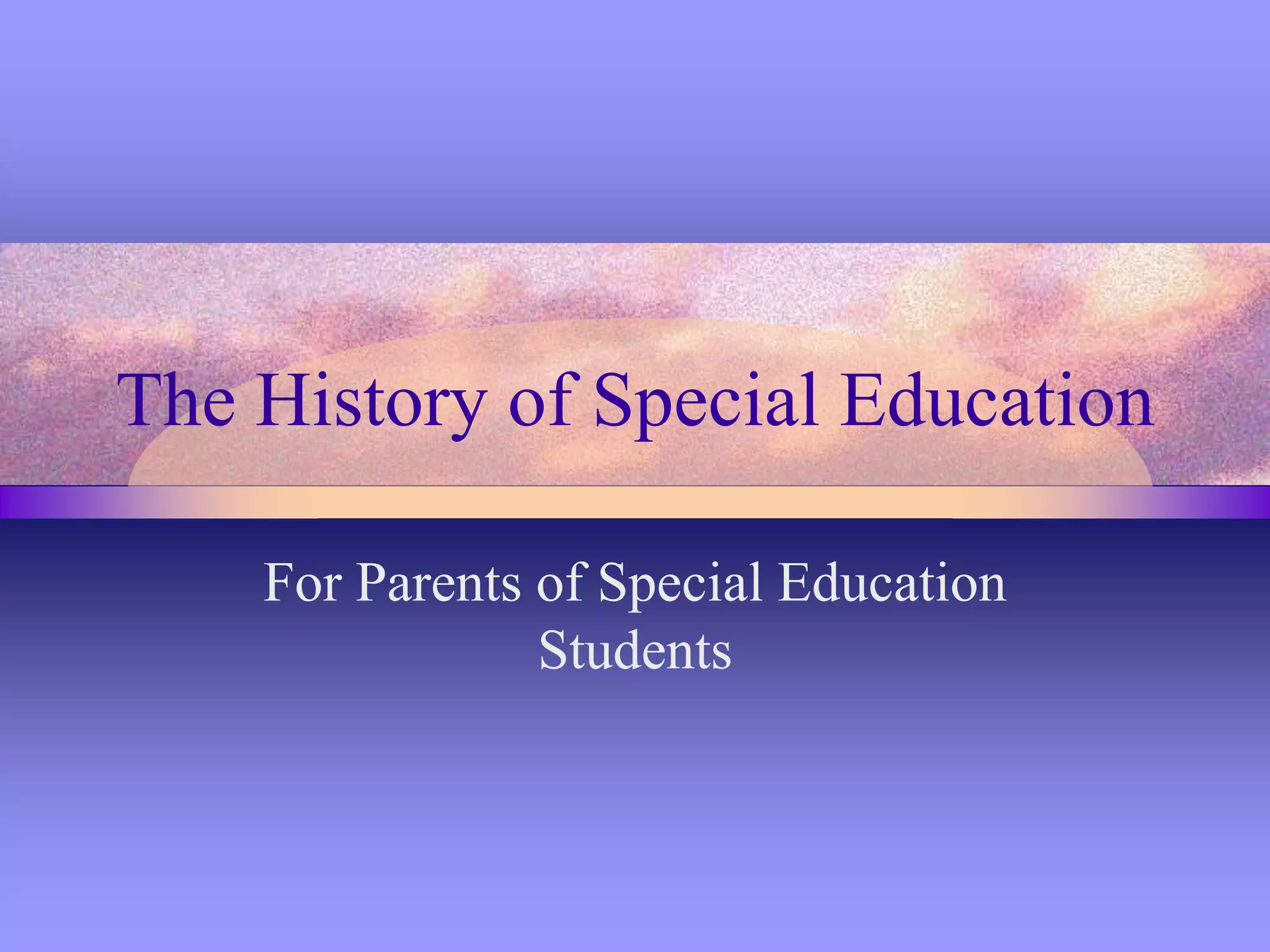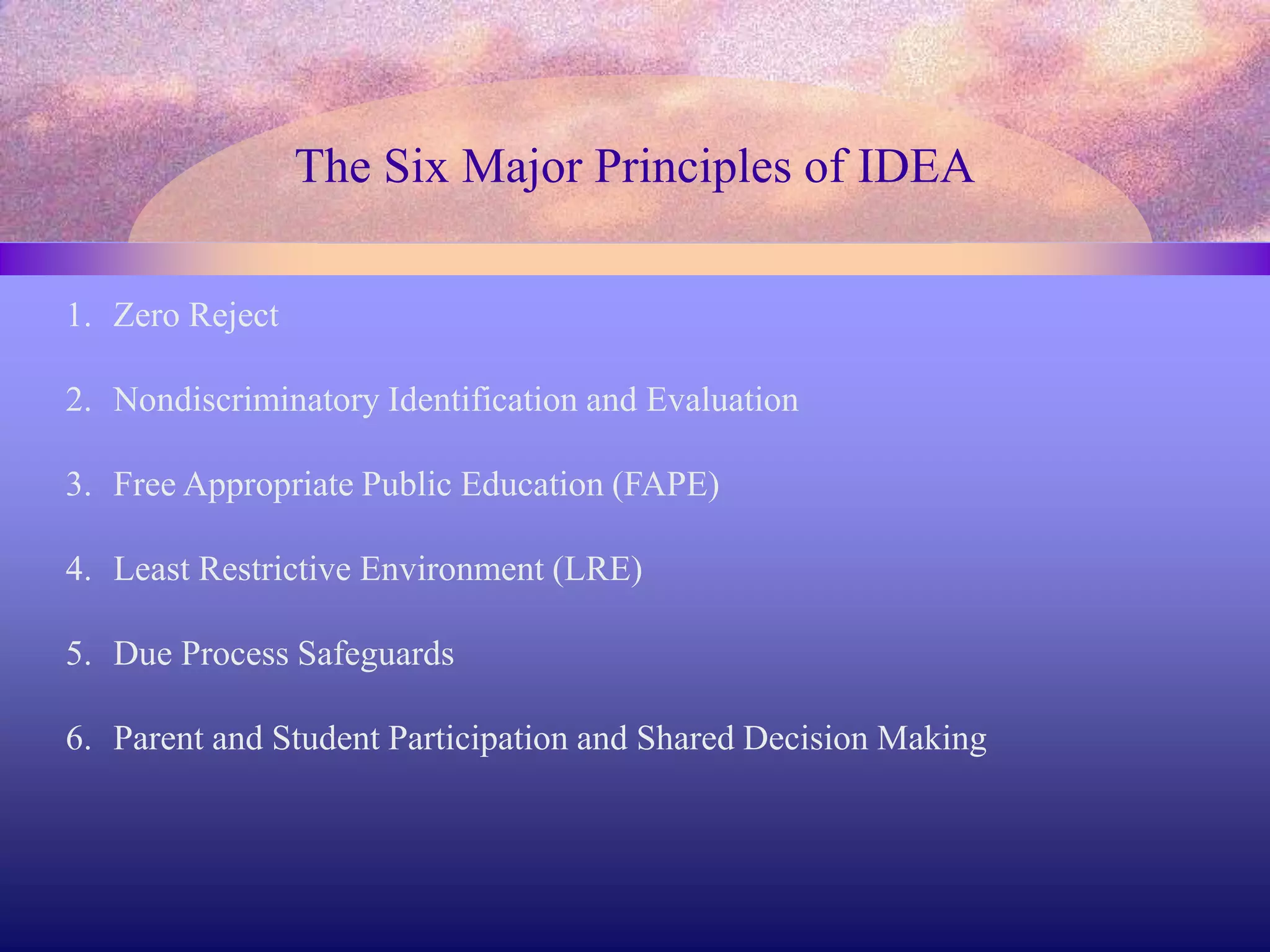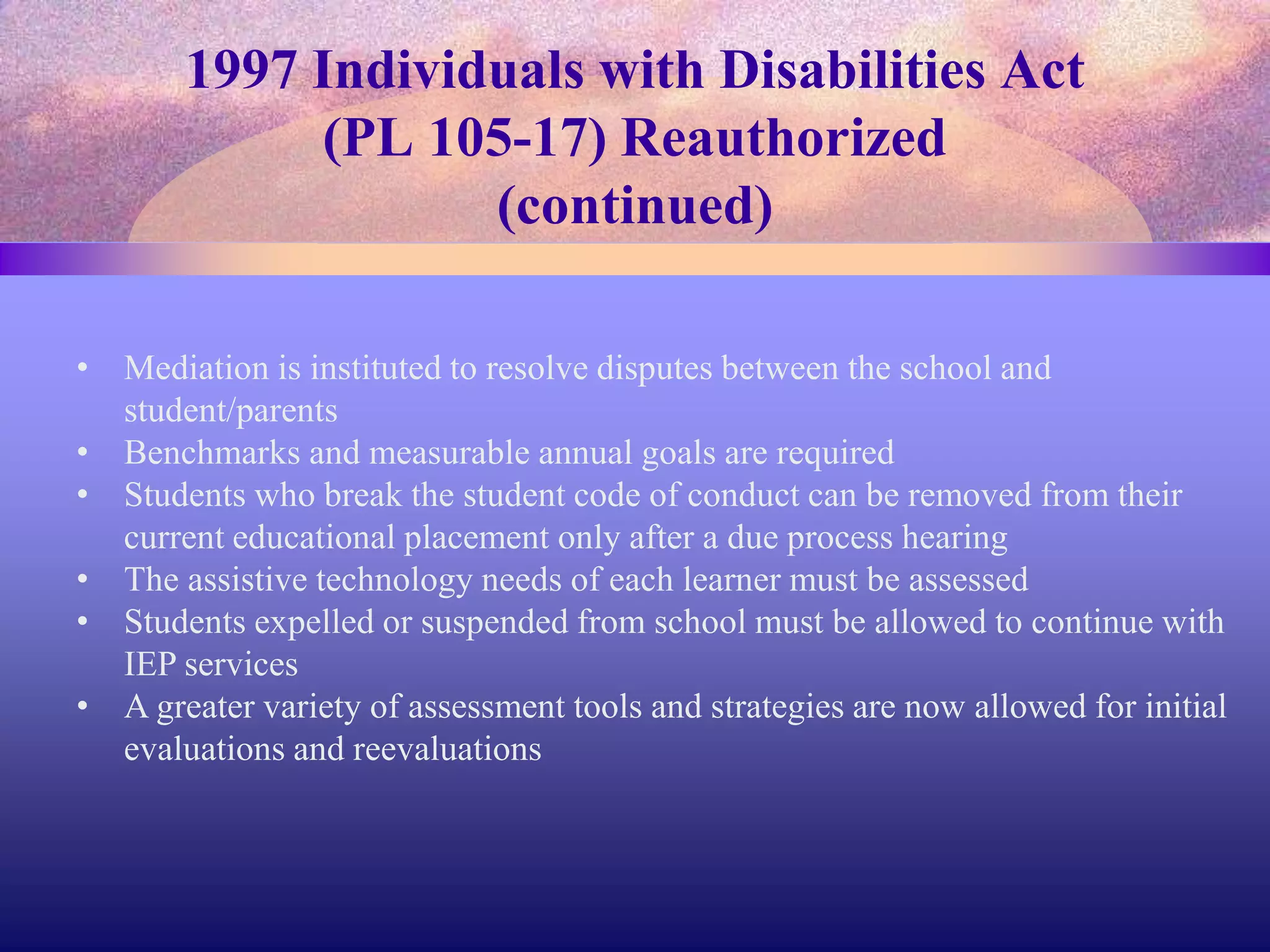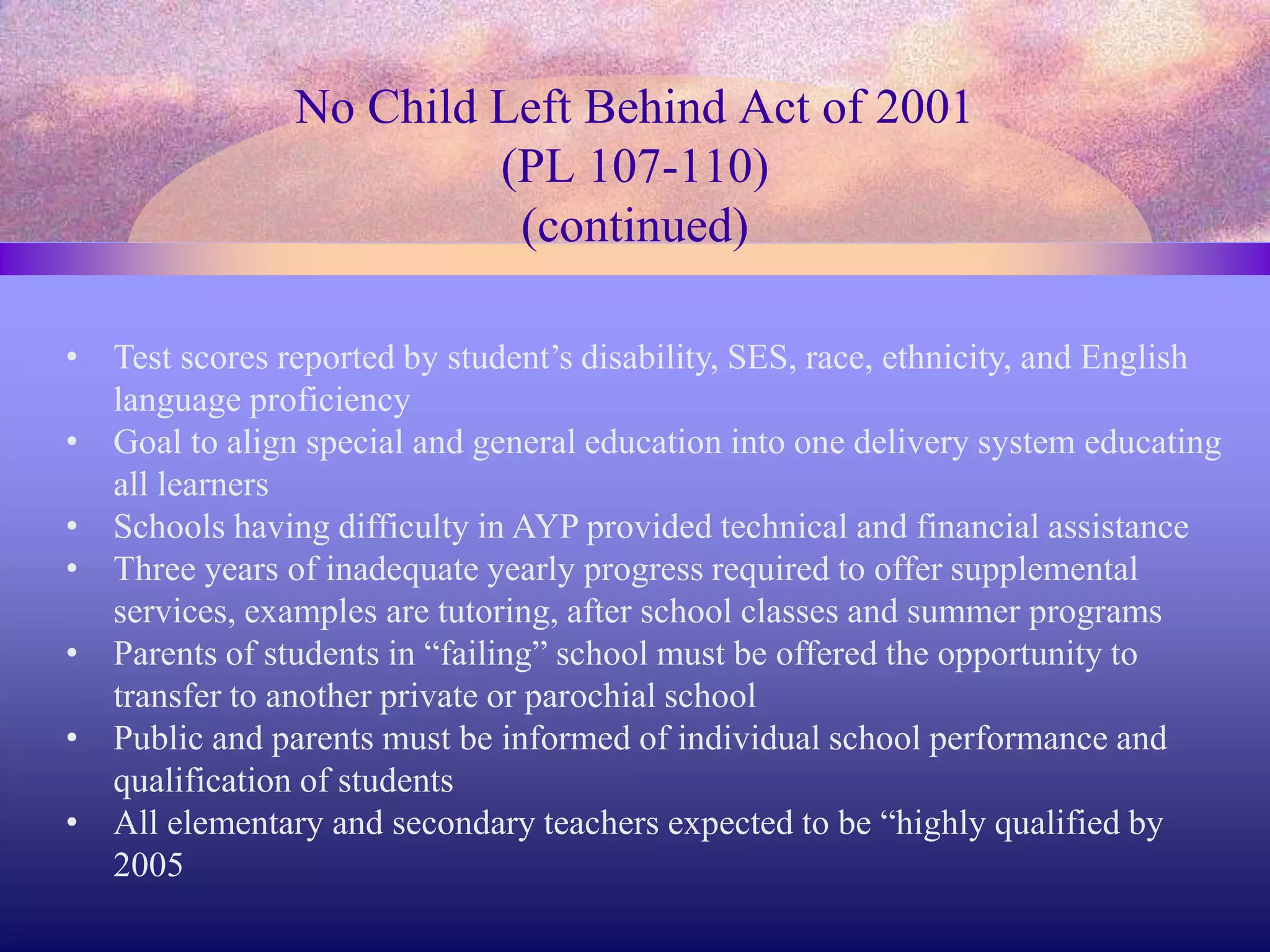The document provides a history of special education in the United States from the 1940s to present. It describes how persons with disabilities were initially excluded from society and education but social attitudes gradually shifted. Major laws and court cases established rights to education for students with disabilities, including the Education for All Handicapped Children Act of 1975, Individuals with Disabilities Education Act, and No Child Left Behind Act. The philosophy of inclusion developed and terminology evolved to focus on individuals' abilities rather than disabilities.
















![References
Assistive Technology Legislation. (2005). Retrieved November 21, 2015, from http://atto.buffalo.edu/registered/ATBasics/
Foundation/Laws/atlegislation.php#TRAID
Gargiulo, R.M. (2015). Special education in contemporary society: An introduction to
exceptionality (5th Ed.). Sage: Thousand. Oaks, CA.
Girl with Down Syndrome [Pic]. (2015). Retrieved November 22, 2015, from http://
www.nationalrighttolifenews.org/news/2013/03/parents-of-unborn-babies-
with-disabilities-often-experience-great-pressure-to-abort/
#.VlHgxYT72To
Mainstreaming vs Inclusion. (2015). Retrieved November 20, 2015, from http://faculty.knox.edu/jvanderg/201_Website_S_08/
Inclusion.html
Sec. 300.8 Child with a disability. (2005). Retrieved November 21, 2015, from http://idea.ed.gov/explore/view/p/,root,regs,
300,A,300%2E8](https://image.slidesharecdn.com/thehistoryofspecialeducation-160528225053/75/The-historyofspecialeducation-17-2048.jpg)
